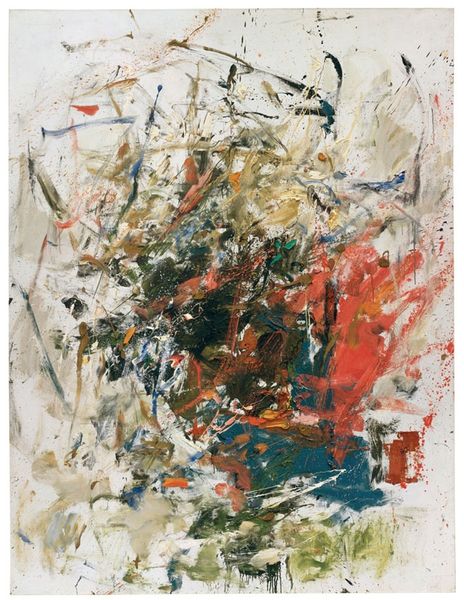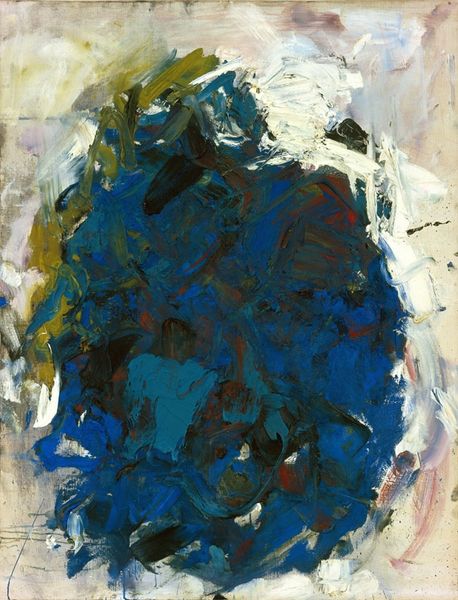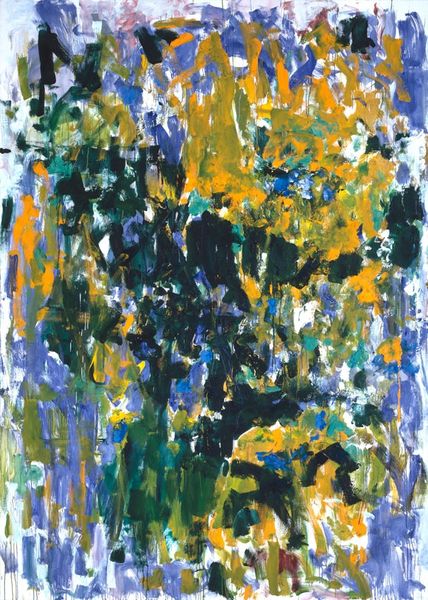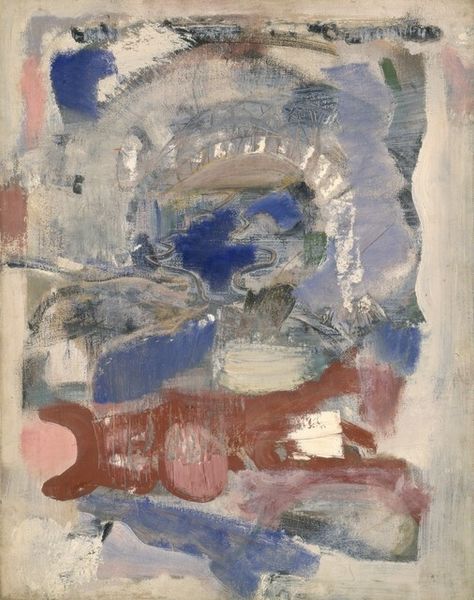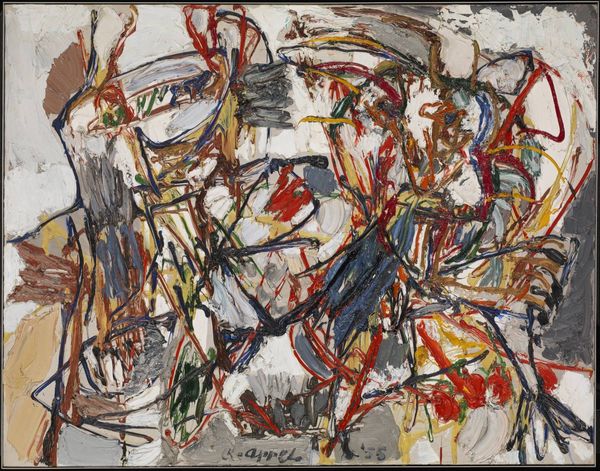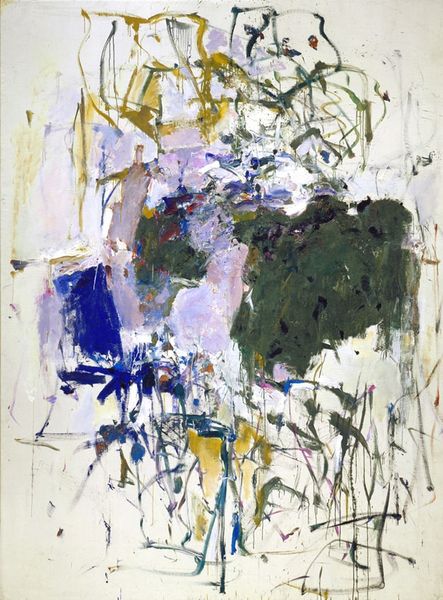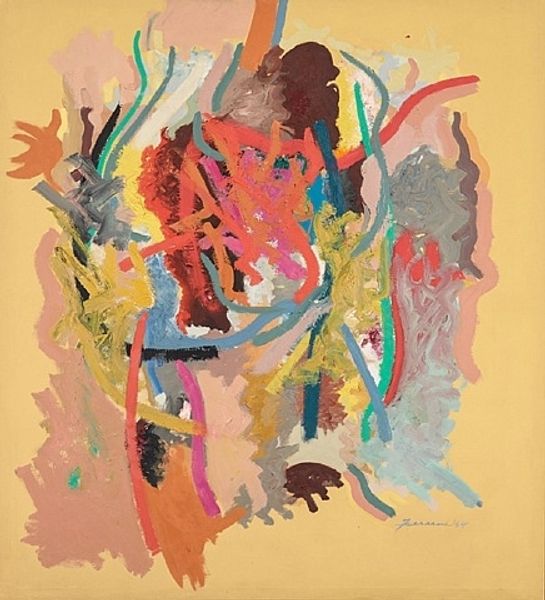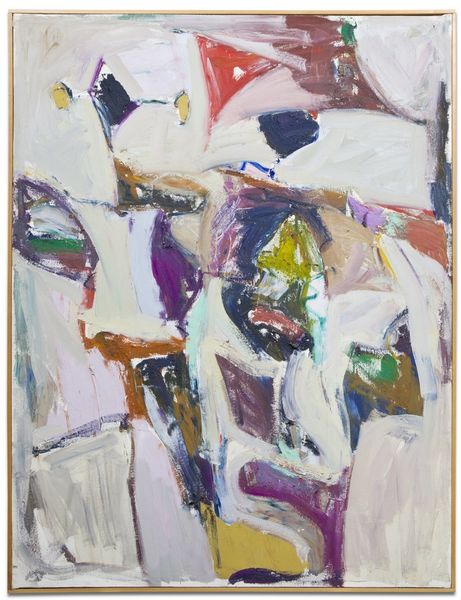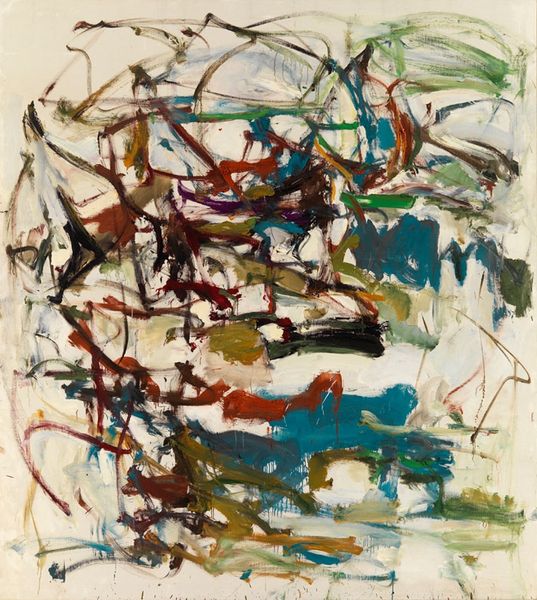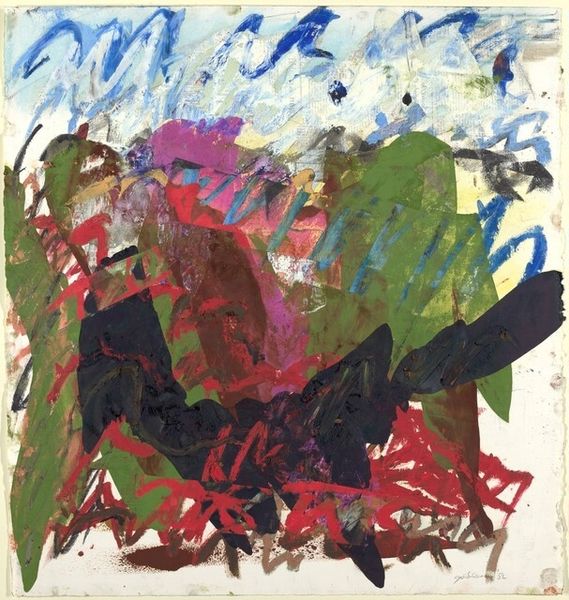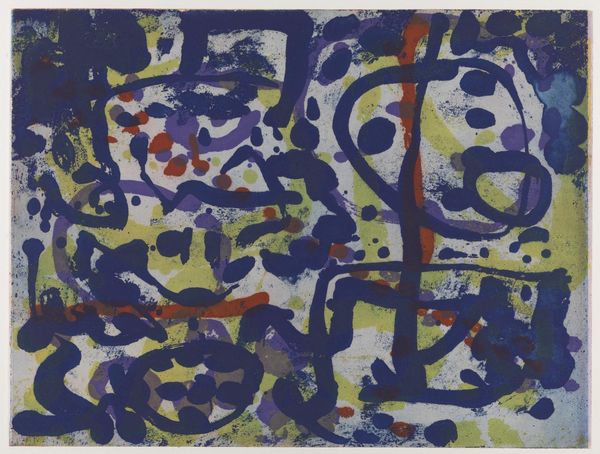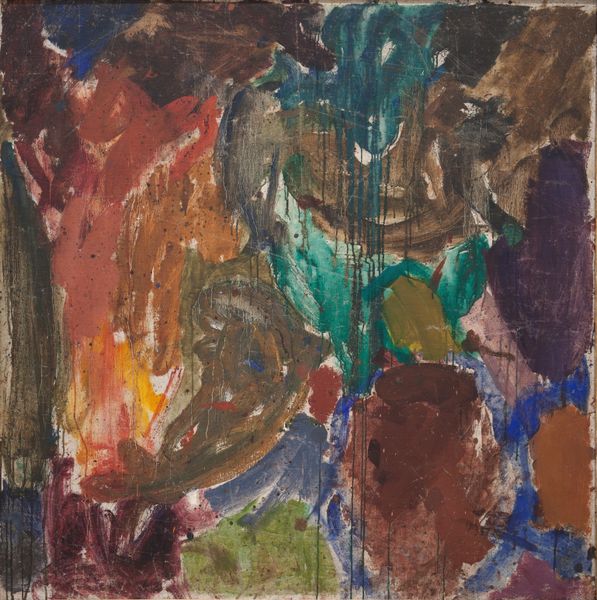
Dimensions: support: 1270 x 1016 mm frame: 1300 x 1047 x 45 mm
Copyright: © William Turnbull. All Rights Reserved, DACS 2014 | CC-BY-NC-ND 4.0 DEED, Photo: Tate
Curator: Here we have William Turnbull's "Head," an oil painting held in the Tate Collections. It’s a sizable canvas, over a meter tall. Quite striking, isn't it? Editor: It's… unsettled. Like a thought barely formed, a memory fragmented into these little blocks of color. I feel the chaos of consciousness, almost. Curator: The abstraction lends itself to that interpretation. Heads, in art, are often stand-ins for intellect or identity. Do you think Turnbull is hinting at a crisis of self? Editor: Or maybe it's the opposite? Building an identity out of all these colorful, disconnected experiences. Sort of beautiful, actually, like a stained-glass window. Curator: That's a lovely thought. The deliberate, almost mosaic-like application of paint does suggest construction, not destruction. Editor: Yes! It's less about the 'head' as a symbol and more about the process of becoming, of piecing oneself together. Gives you something to think about. Curator: It certainly does. Another layer to Turnbull's work that I hadn't considered.
Comments
Join the conversation
Join millions of artists and users on Artera today and experience the ultimate creative platform.
tate 6 months ago
⋮
Turnbull is well known today both for his sculpture and his abstract paintings. Between 1950 and 1957 the fragmented head was a major theme in his paintings, reliefs and sculpture. He said that his paintings developed out of a desire to ‘imagine what a head would be if flat (squeezed between two pieces of glass like a micro-slide) and made of paint marks’. He later explained that the word ‘head’ had ‘meant for me what I imagined the word ‘landscape’ had meant for some painters – a format that could carry different loadings’. Gallery label, July 2007

